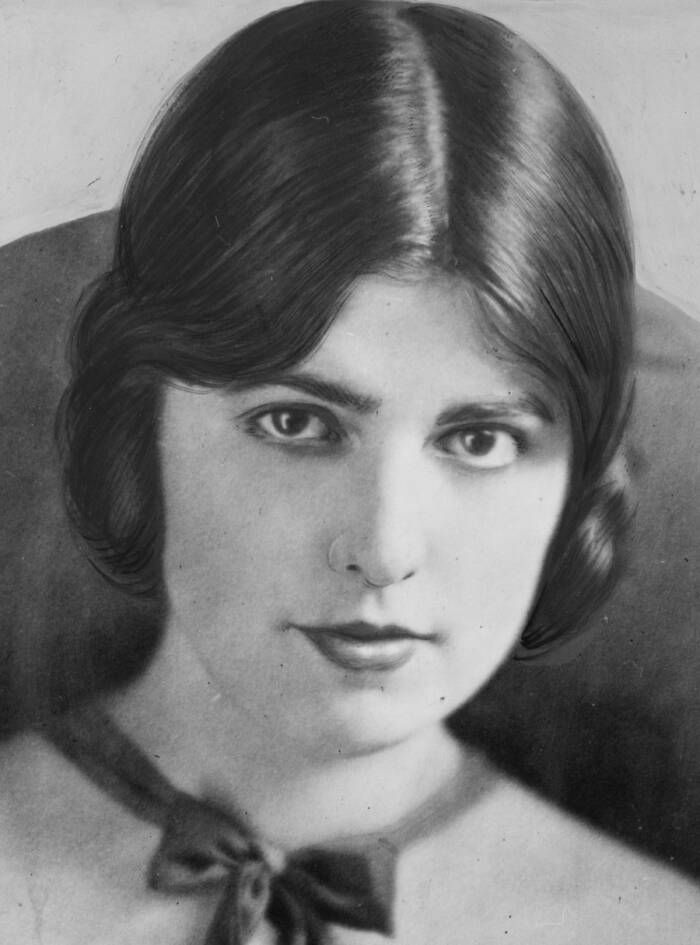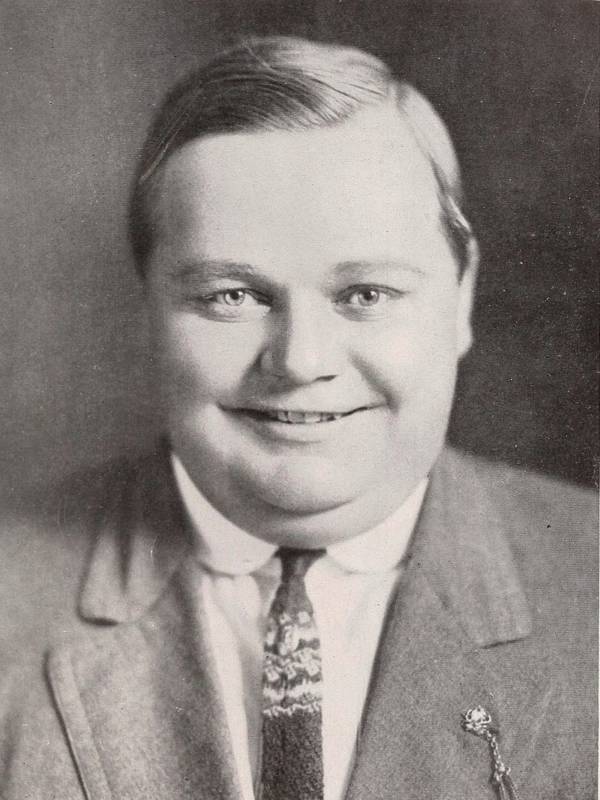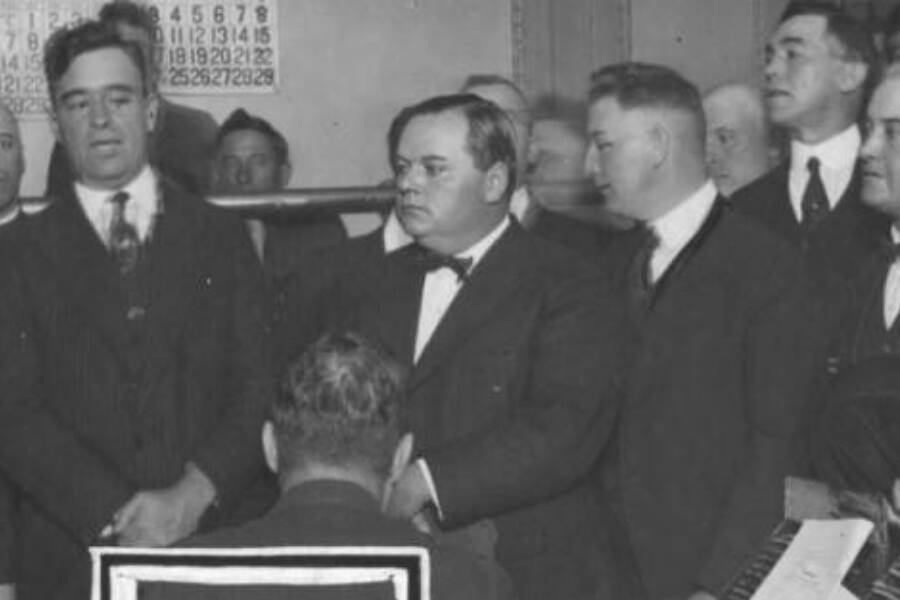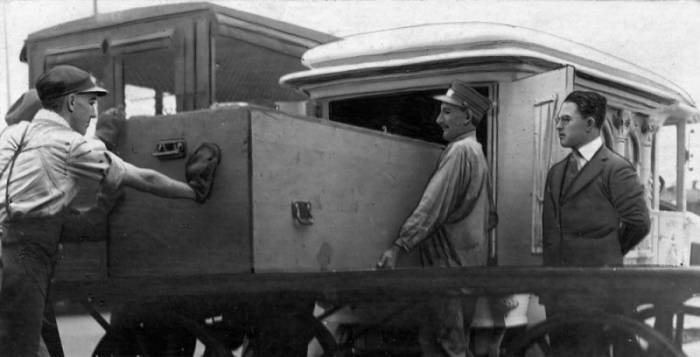Just days after attending a San Francisco party, 30-year-old Virginia Rappe died of a ruptured bladder and peritonitis — and rumors quickly spread that she had been raped and murdered.

Wikimedia CommonsA promising young Hollywood actress in the 1910s, Virginia Rappe died under mysterious circumstances involving fellow actor Fatty Arbuckle in 1921.
Virginia Rappe was an up-and-coming actress and successful model when she died at the age of 30 on September 9, 1921, shortly after attending a party in San Francisco. Her sudden death — and the events leading up to it — soon stirred up a media frenzy in early 1920s Hollywood.
An autopsy revealed her cause of death to be a ruptured bladder and peritonitis, an inflammation of a thin layer of tissue inside the abdomen. But ominous rumors spread that Rappe was the victim of a violent sexual assault by Roscoe “Fatty” Arbuckle, a prominent silent film actor who attended the party. A trial would later acquit him of manslaughter.
Even today, over 100 years after the tragic incident, the public is still discussing what really happened to Virginia Rappe. Did she die of a pre-existing bladder condition, or was she murdered? Or did something else lead to her untimely demise? The full truth is difficult to unravel.
The Early Life And Career Of Virginia Rappe In Silent-Era Hollywood

Metro PicturesVirginia Rappe in the silent film Paradise Garden (1917).
Virginia Rappe was born on July 7, 1891 in Chicago and had a difficult childhood. Her mother passed away when she was only 11 years old and she never knew her father, so she was left in the care of her grandmother.
Around the age of 16, Rappe began working as a model in fashion shows at department stores. She soon became one of the first women to actually make a living from the then-new profession. By the time she was 25, she’d found enough success to move to San Francisco in 1916. There, she developed her career further and even had a short relationship with dress designer Robert Moscovitz, who was tragically killed in a trolley-car accident.
Soon afterward, Rappe moved to Los Angeles to work for film director Fred J. Balshofer. She later appeared in the silent film Paradise Garden.
From there, Rappe appeared in other silent films, totaling a little over a dozen. By 1919, Rappe had also started a relationship with director Henry Lehrman, and she was engaged to him at the time of her death.

Library of Congress/Wikimedia CommonsAlong with acting in silent films, Virginia Rappe was also a successful model who dabbled in fashion design.
Throughout her career, Virginia Rappe made headlines for spearheading proto-feminist causes, posing in tuxedos for an article that called for women to have “equal clothes rights with men,” encouraging women to “be original — every girl can be that,” and celebrating the idea of independence.
Aside from modeling and acting, she also dipped her toes in fashion design. According to the book Room 1219 by Greg Merritt, Rappe was designing her own pieces by 1914 and even had some of her creations exhibited at the 1915 World’s Fair. A newspaper article detailed how Rappe was “a young woman who has lifted fashion designing to the plane of fine art.”
Unfortunately, Virginia Rappe succumbed to an early and painful death that cut her careers short and left the public with more questions than answers.
Fatty Arbuckle And The Ill-Fated Party On September 5, 1921

Wikimedia CommonsRoscoe “Fatty” Arbuckle, one of the biggest stars of the silent film era.
In 1921, Roscoe “Fatty” Arbuckle was the highest-paid actor in Hollywood. He had recently signed a deal with Paramount Pictures for $1 million (equivalent to over $16 million today), a nearly unheard-of salary for the time. Posters for his movies billed the 266-pound comedian as “worth his weight in laughs.”
But before the year was over, he was accused of a crime so monstrous that his career would be ruined and his reputation would be destroyed.
The conflicting accounts, tabloid exaggerations, and general furor surrounding the alleged crime that ended Arbuckle’s acting career make it difficult to determine what actually happened that fateful day.
Even today, publications re-examining the scandal often come to completely different conclusions regarding Fatty Arbuckle’s guilt or innocence.
The only indisputable facts seem to be that on September 5, 1921, there was a party at the St. Francis Hotel in San Francisco where alcohol was in abundance, despite Prohibition, and that both Arbuckle, then age 34, and 30-year-old Virginia Rappe were in attendance. (Rappe often claimed to be younger than she was, so some publications mistakenly printed that she was in her 20s.) Then, at some point during the revelry, Arbuckle and Rappe were briefly in the same hotel room together. But when Arbuckle left the room, Rappe remained lying on the bed, moaning and “writhing in pain.”
Whatever happened that night, Virginia Rappe’s condition had still not improved for three days afterward. She was eventually taken to a hospital, where doctors originally thought she had alcohol poisoning from the bootleg liquor. But as it turned out, she had peritonitis resulting from a ruptured bladder. These ailments ultimately killed her on September 9, 1921.
What Really Happened Between Virginia Rappe And Fatty Arbuckle?

Wikimedia CommonsOne of the rooms occupied by Fatty Arbuckle and other guests during the infamous party.
What fueled the scandal at the time and what has remained a mystery ever since is what role, if any, Fatty Arbuckle played in Virginia Rappe’s death.
In the years before she died, Virginia Rappe had a reputation as something of a party girl. One journalist described Rappe as an “amateur call-girl… who used to get drunk at parties and start to tear her clothes off.” Rumors spread that she dabbled in sex work and had as many as five abortions.
At Rappe’s last party, Arbuckle initially claimed that Rappe became “hysterical” after drinking and that she “complained she could not breathe and then started to tear off her clothes.” He also claimed that he had not been alone with her at any point (his story would later change).
Those who were unsympathetic about Virginia Rappe’s fate claimed this was further proof of her wild ways, while her defenders pointed out that she had a bladder condition that was exacerbated by alcohol. The condition purportedly caused her so much discomfort that she sometimes disrobed in an attempt to feel more comfortable — not to attract attention.
As for the events of September 5, 1921, the accounts of the night vary widely.

Los Angeles Public LibraryMaude Delmont, the key witness who accused Fatty Arbuckle of raping Virginia Rappe.
According to party guest Maude Delmont, Arbuckle strong-armed Rappe into his room, saying, “I’ve waited for you five years, and now I’ve got you.” Delmont claimed that she became concerned upon hearing screams from behind the closed door of Arbuckle’s room and started knocking.
According to Delmont, Arbuckle answered the door wearing a “foolish screen smile” and Virginia Rappe was on the bed, moaning in pain. Delmont claimed that Rappe managed to gasp, “Arbuckle did it,” before she was taken away into a different hotel room, presumably to help her recover from drinking.
At Arbuckle’s trial, however, he would testify that he had gone into his bathroom and found Rappe already there on the floor, vomiting. After Arbuckle purportedly got her water and helped her onto the bed, other guests summoned the hotel doctor, who determined that Rappe was just heavily intoxicated and took her into another hotel room to sleep it off. Notably, this version of Arbuckle’s story did have him alone with Rappe for a period of time, which he had denied earlier in his original story.
While Rappe was in the hospital, Delmont told a doctor Arbuckle had raped Rappe. And shortly after Rappe’s death, Arbuckle was arrested and charged with murder, which would later be reduced to manslaughter.
The Trial Of Fatty Arbuckle — And Why Virginia Rappe’s Death Remains Puzzling

Los Angeles Public LibraryFatty Arbuckle was acquitted of manslaughter in the Virginia Rappe case, but his reputation was forever damaged.
Amidst the allegations that Virginia Rappe had been brutally raped and murdered by Fatty Arbuckle, newspapers across America quickly capitalized on the scandal. Some reporters claimed that the overweight Arbuckle had crushed Rappe while trying to have sex with her, and others offered up increasingly outrageous stories of Arbuckle’s supposed depravities.
Considering Rappe’s reputation as a party girl, Arbuckle’s size, and the mystery behind the pair’s encounter, newspapers saw ample opportunity to print the most salacious rumors possible about the incident. Publishing magnate William Randolph Hearst gleefully noted that the scandal had “sold more papers than the sinking of the Lusitania.” By the time Arbuckle went to trial for manslaughter, his public reputation was already ruined.
Meanwhile, Maude Delmont, the party guest who accused Arbuckle of raping Virginia Rappe, was found to have had a dark history of criminal fraud and extortion, specifically with blackmailing wealthy male celebrities who attended parties with various women. It certainly didn’t help Delmont’s credibility when she was caught sending telegrams to attorneys, saying, “WE HAVE ROSCOE ARBUCKLE IN A HOLE HERE CHANCE TO MAKE SOME MONEY OUT OF HIM.”
Furthermore, Delmont kept changing her story about how well she knew Rappe. At some points, she claimed to have known her for years, but at other times, she said she’d just met her a few days before the party. In the end, Delmont was never actually called to the stand because prosecutors knew her testimony would probably never hold up in court.

Los Angeles Public LibraryWorkers transporting Virginia Rappe’s body for burial.
But despite Maude Delmont’s dwindling credibility and the fact that Fatty Arbuckle’s lawyers showed that Virginia Rappe’s autopsy had concluded that there “were no marks of violence on the body, no signs that the girl had been attacked in any way,” it took three trials before Arbuckle was acquitted of manslaughter after the first two trials ended with deadlocked juries.
By that point, the scandal had so devastated Arbuckle’s career that the jury who acquitted him felt obliged to read an apologetic statement to Arbuckle that concluded: “We wish him success and hope that the American people will take the judgment of fourteen men and women that Roscoe Arbuckle is entirely innocent and free from all blame.”
As for what really happened to Virginia Rappe, that remains a mystery.
While Rappe’s autopsy did find that she had inflammation of the bladder, medical experts also noted that spontaneous ruptures of the bladder were extremely rare. But one thing is certain: Her death at age 30 was a terrible tragedy, ending what could have been a promising acting career.
After this look at Virginia Rappe’s short life and mysterious death, read up on other early Hollywood scandals, including the murder of William Desmond Taylor and the tragic downfall of Frances Farmer.





